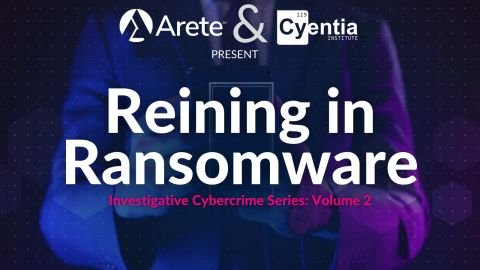In the world of vulnerability management, Cyentia and Kenna Security are leading the charge, using data science to guide better decision-making and technology. Volume 5 of their P2P series applies this methodology to the modern enterprise IT infrastructure and reveals how vulnerable various device categories are and how remediation efforts can minimize risk.
Ransomware
Cyber risk management company Arete and cybersecurity research firm Cyentia have partnered to create a new report called Reining in Ransomware. The report explores the prevalence of ransomware, its implications for businesses, and ransom demand trends. It also analyzes the behavior of the threat actors responsible for such attacks. It includes a detailed analysis of over 1,500 ransomware incidents, resulting in more than $1 billion in ransom demands.
The Arete report also provides actionable tips for cyber security. Organizations can greatly reduce their overall risk by building a focused defense strategy. It recommends deploying multi-factor authentication and network segmentation for maximum protection. Additionally, organizations should use behavior-based security policies on endpoints to prevent malicious actors from accessing the network.
Despite the efforts to mitigate ransomware, it remains a long-term threat to the US economy. The three main factors that encourage ransomware attacks are:
- Widespread security deficiencies.
- A cryptocurrency pipeline that is poorly regulated.
- An ill-regulated payment system.
These conditions will require years of sustained effort to combat ransomware. The first step in mitigating the problem is to increase the level of awareness among employees.
The recent spike in ransomware indicates a shift in the tactics used by criminals. In the past, ransomware attacks targeted a large number of individual users. These campaigns resulted in modest revenues for cybercriminals and minor damage. Now, however, cybercriminals have focused on extorting organizations rather than individuals.
Some government officials have called for a ban on ransom payments. While this will not eliminate the threat of targeted ransomware, it could discourage the criminals from stealing data and holding it hostage in a second ransom demand. The bill also provides limited liability protections for individuals who report a breach.
DNS firewalls
DNS firewalls are a great way to protect the entire network, not just individual clients and users. They can provide intelligence and insight into overall network traffic, so administrators can take immediate action when a threat is detected. And because these products protect DNS, they require minimal deployment resources.
Using a DNS firewall can free up your team from manual security tasks and build a proactive network experience. By protecting the entire infrastructure at the DNS level, DNS Firewalls can prevent malware infections and users from accessing malicious sites. They integrate with your existing recursive DNS servers and managed DNS services.
These DNS firewalls are efficient and effective at blocking horrible traffic. DNS queries are processed before any more expensive operations. As a result, a DNS firewall can block the vast majority of malicious traffic in seconds. However, these firewalls must be used with great care. External-facing DNS firewalls cannot see the device name and can only block malicious traffic.
DNS Firewalls use threat intelligence to analyze DNS resolution requests. These DNS requests are then forwarded to a different site if they are not safe. This way, DNS Firewall can prevent end-user access to phishing sites and prevent harm from these sites. Moreover, a DNS firewall does not require additional software on end-user workstations.
Mitigating impact
Arete, a global leader in cyber risk management, and cybersecurity research firm Cyentia have collaborated on a new report called Reining in Ransomware. This report explores the most common strains of ransomware and how they spread. It also provides insights into the latest trends in ransom demands and data exfiltration. Arete and Cyentia’s research analyzed over 1,500 ransomware events and over $1 billion in demands.
The rebirth of virtue ethics coincides with the emergence of artificial intelligence and value alignment. The manuscript Android site refers to virtuous machines, and it was inspired by the Greek word for virtues used by Aristotle. Aristotelean virtue ethics was adapted by Berberich and Diepold, who draw parallels between Arete and lifelong learning.
Human cybersecurity risk in the workplace
Human cybersecurity risk is an ongoing concern for organizations. Employees can be careless, uninformed, or malicious, and these factors can lead to breaches. In addition, mobility trends can make employees vulnerable to cybersecurity attacks. As a result, organizations must be vigilant against social engineering and phishing attacks, which can put businesses at risk. These incidents can also be challenging to detect because staff members may hide their involvement. That is why it is critical to prevent these issues before they happen.
Companies can reduce cybersecurity risk by engaging employees in security training and educating staff on cyber threats. Training can help employees become more aware of the potential threats to their company and motivate them to prioritize countermeasures. For example, employees should be trained to protect personal passwords and update their computers. Training is also crucial for improving employee engagement and data security.






